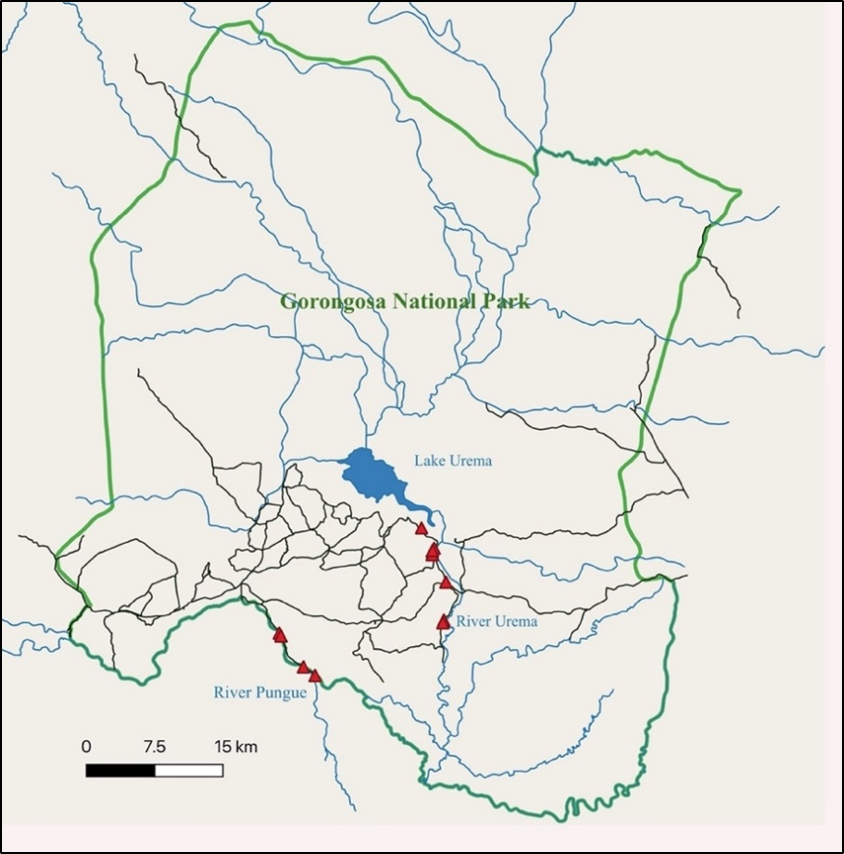A culture of aggression: the Gorongosa elephants' enduring legacy of war
DOI:
https://doi.org/10.69649/pachyderm.v64i.518Abstract
Humans have hunted elephants since the Palaeolithic era and, as cunning predators, have likely helped shape the animals’ sophisticated defensive behaviour. In recent centuries, the use of modern weapons in targeted mass killings has resulted in signs of post-traumatic stress disorder (PTSD) in elephants, including heightened aggression and impaired decision- making. During Mozambique’s long civil war (1977–1992), 90% of the elephants of Gorongosa National Park were killed. More than a quarter of a century after the end of hostilities aggression towards vehicles by elephant families is an enduring legacy. This study found that females and entire families were more likely to charge when vehicles were in close proximity (<~80 m) and on, rather than off, the roads. Although aggression was primarily initiated and led by older adult females, most charges involved mobbing by entire families, including calves. Some individuals engaged in idiosyncratic defensive behaviours, while some families exhibited distinctive group manoeuvres that appeared to form traditions, indicating that young elephants were acquiring their defensive responses within this social context. We argue that the aggressive behaviour of the Gorongosa elephants is a response to the traumatic events of the civil war and that the observed patterns of behaviour are transmitted within and across groups, giving rise to a culturally learned behavioural variant that has persisted over time and generations. Given rapid environmental change, increasing contact between elephants and people, and the extreme losses caused by poaching and armed conflict, a better understanding of the role that culture plays in the response of elephants to people is urgently needed. Conservation and management strategies may have to be adapted to meet the changing cultures of specific elephant populations.

Downloads
Published
How to Cite
Issue
Section
License
Copyright (c) 2023 Joyce Poole, Petter Granli, Jason Denlinger, Dominique Demille

This work is licensed under a Creative Commons Attribution-NonCommercial 4.0 International License.



